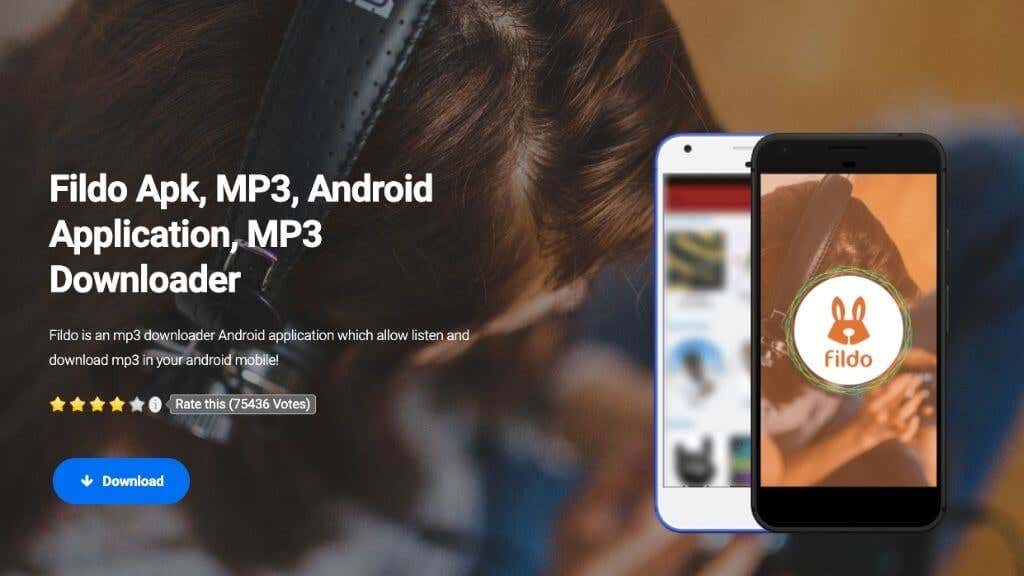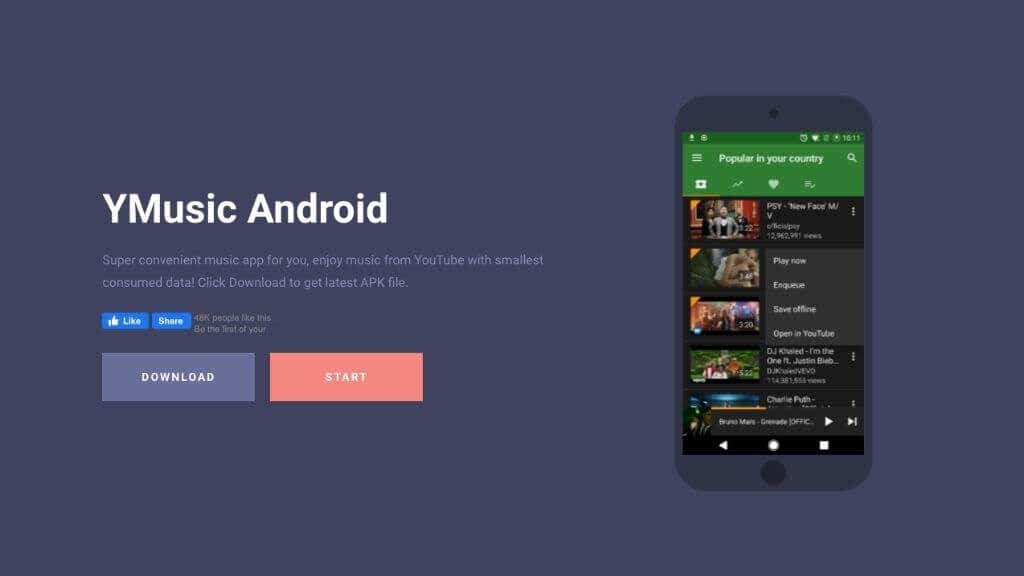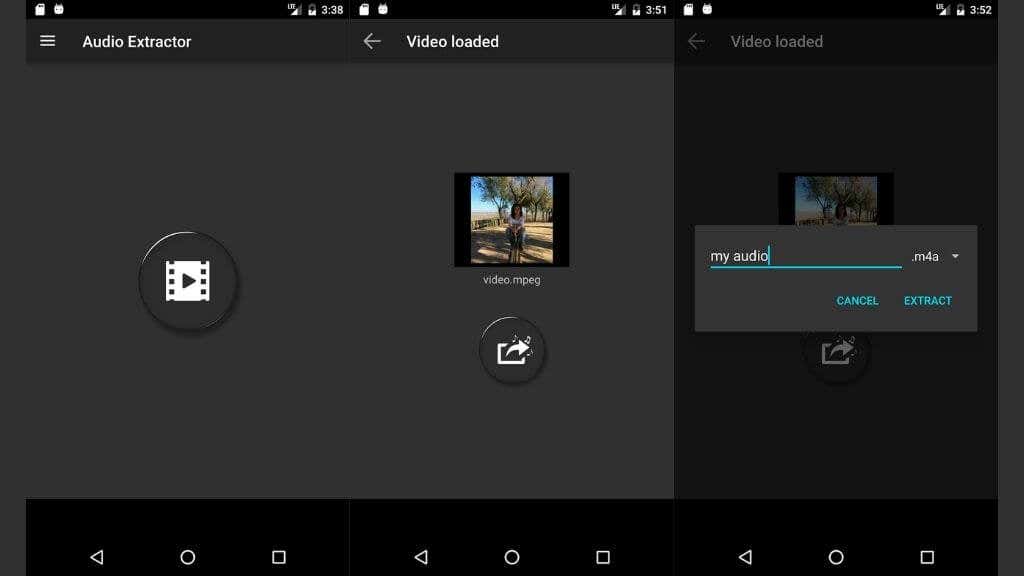In-app Downloading
Of course, you still need the app to listen to the music, and you can’t access the files directly, but if all you want is offline listening, check whether your preferred app has the download option and make use of it.
Use a CD Ripper
If you still have a music collection on CD, you can transfer it to your phone for offline listening. All you need is a CD “ripping” application and a drive, of course! There are quite a few options, but one of the best free choices is Exact Audio Copy. By default, EAC rips your CD audio to a lossless format. Modern phones have so much space that you may prefer your music in this crispy format, but refer to the EAC Beginners Guide for more information if you want to get MP3s out at the other end. If you have an iOS device, you can use iTunes (Windows or Mac) to rip CDs and transfer music to your iPhone or iPad. Once you have your CDs converted to the digital file format of your choice, you can connect your Android phone to your computer using a USB cable. Then simply drag and drop files to the phone’s internal storage as if it were a USB flash drive. If you’re using an iPhone, you can use iCloud Drive to sync your music files over the internet from a Windows PC or macOS system. If you have a Mac, you can directly Airdrop the files to your phone.
Download Stored Audio Files From the Cloud
Speaking of using the cloud to download music to your phone, this is one of the most accessible options if you want to move music files to your phone’s internal storage. You can use OneDrive, Google Drive, iCloud Drive, or virtually any other cloud storage app. Just copy the music files into your cloud drive on a desktop computer and then access them through the mobile app. This is a good solution for music file sources that don’t work well on Android or iOS or for music sources that allow downloading on a PC but not on the phone.
Download Music Files Using a Browser
There are many websites on the internet that let you download music directly to your computer. Since your phone has a full-fledged web browser on it, you can do precisely the same thing there. Just visit the website, select the download link and save the file to your phone’s internal storage. You may need to use your Android or iOS files app to move the music from the default download location to your music folder so that your music collection is easier to manage. There are many great free music sites on the web, but be careful not to download copyrighted music. Especially from questionable websites that have a good chance of hosting malware!
Use a YouTube Video Downloader
Sometimes the only place where you can find a particular song is YouTube. However, it doesn’t make sense to download a whole video when you want to listen to the audio. There are numerous apps and websites that let you download a YouTube video which is easily found using Google. Most of these also give you the option of downloading the audio-only. Check out our Youtube audio ripping guide if you need more specific instructions.
Sideloaded Android Apps
If you want apps that will let you rip music from services like YouTube and then download the resulting file to your phone’s internal storage, you won’t find anything on the official app store. That’s because these applications go against the terms and conditions of app stores in general. Using them may also be illegal where you live, so be sure to double-check the exact applicable laws in your location. On iOS, you’re pretty much out of luck unless you want to jailbreak your device to load external applications on it, but Android makes it easy to “sideload” applications. Just make sure you have a good antivirus application on your device. For further information on sideloading, check out these articles:
What Is Sideloading?How To Install Android Apps Using The APK File5 Best Safe APK Download Sites for Android Apps
Here are two excellent apps you can sideload to rip music from popular services to get you started.
Fildo
Fildo is an app that acts as a gateway to various sources of MP3 music on the internet. You can stream the music or download it directly to your phone’s internal storage. There is a version of Fildo on the Google Play Store, but it’s not the latest version and doesn’t have the complete set of features of the sideloaded version. While it’s not ready yet, Fildo is also working on an iOS version.
YMusic
YMusic is specifically designed to rip music from YouTube, and since just about every song ever is on YouTube, that gives you a vast array of offline listening options.
Recording Internal Phone Audio
If you’re running the latest version of iOS (15 at the time of writing) or at least Android 10, then you have the option of using the built-in screen recorder also to capture any audio that’s currently playing. You can then either simply listen to the saved video using a media player of your choice, or you can use an app to extract the audio from the resultant video. On Android, you can use an app like Extract Audio From Video, and on iOS, an equivalent example is Export Audio. You’ll find numerous similar apps on the app store that can do this job.
You May Need a Music Player App
Depending on the types of files you download, and which media player applications come with your device, you’ll possibly need a good music player app to listen to your downloaded songs. A few good options include:
AIMP (Android, Free)Vox (iOS, Free)
These apps will help you manage your downloaded music in a way that offers a similarly smooth experience to streaming apps such as YouTube Music, Spotify, SoundCloud, or Apple Music. Of course, they are also great for listening to offline podcasts!
Download Responsibly!
It’s important to note that we’re only showing you the various ways in which you can download music to your phone. That doesn’t mean you should use that knowledge to infringe on anyone’s copyright! Always make sure you have the legal right to download a piece of music before doing it. If in doubt, check with the copyright owner. In some cases, the rights holder may even offer you copies of the music without needing special download workarounds!






